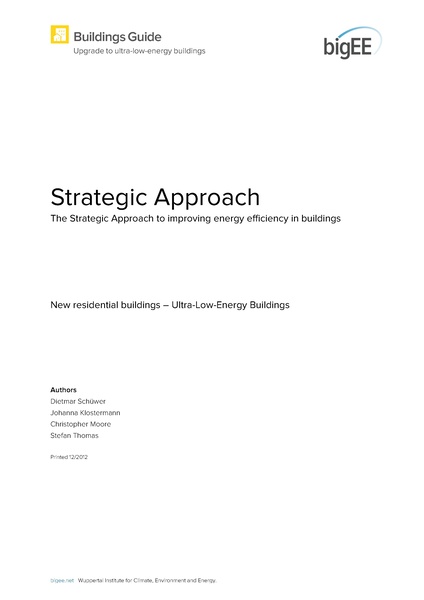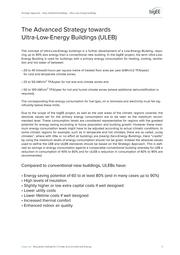Click here to register!
File:Bigee txt 0045 bg strategic approach uleb new residential.pdf
 Size of this JPG preview of this PDF file: 424 × 600 pixels. Other resolution: 169 × 240 pixels. |
Original file (2,479 × 3,508 pixels, file size: 13.37 MB, MIME type: application/pdf, 13 pages)
Summary
The Advanced-Efficiency Approach or Ultra-Low-Energy Buildings (ULEB) is a further development of a Low-Energy Building, requiring up to 90 % less primary energy consumption than a conventional new building. The Ultra-Low-Energy Building maximizes a building’s energy efficiency potential. An Advanced-Efficiency Approach is needed to attain these low levels of energy consumption. Ultra-Low-Energy Buildings set more ambitious energy efficiency standards, using the most-energy-efficient components and systems available to reduce the energy consumption. This energy consumption should preferably be covered by renewable energy sources such as solar energy, ambient and geothermal energy, sustainable biomass etc. It can be cost-effective, depending on the trade-off between incremental capital costs and long-term energy cost savings but this may not always be the case.
Licensing
| File from an External Source | This file is from an external source. The copyright provisions of the original source apply to this file. Please report copyright infringements to the energypedia team so that it can delete the appropriate files. |
|---|
File history
Click on a date/time to view the file as it appeared at that time.
| Date/Time | Thumbnail | Dimensions | User | Comment | |
|---|---|---|---|---|---|
| current | 21:33, 15 December 2014 |  | 2,479 × 3,508, 13 pages (13.37 MB) | ***** (***** | *****) | The Advanced-Efficiency Approach or Ultra-Low-Energy Buildings (ULEB) is a further development of a Low-Energy Building, requiring up to 90 % less primary energy consumption than a conventional new building. The Ultra-Low-Energy Building maximizes a bu... |
You cannot overwrite this file.
File usage
There are no pages that use this file.




















